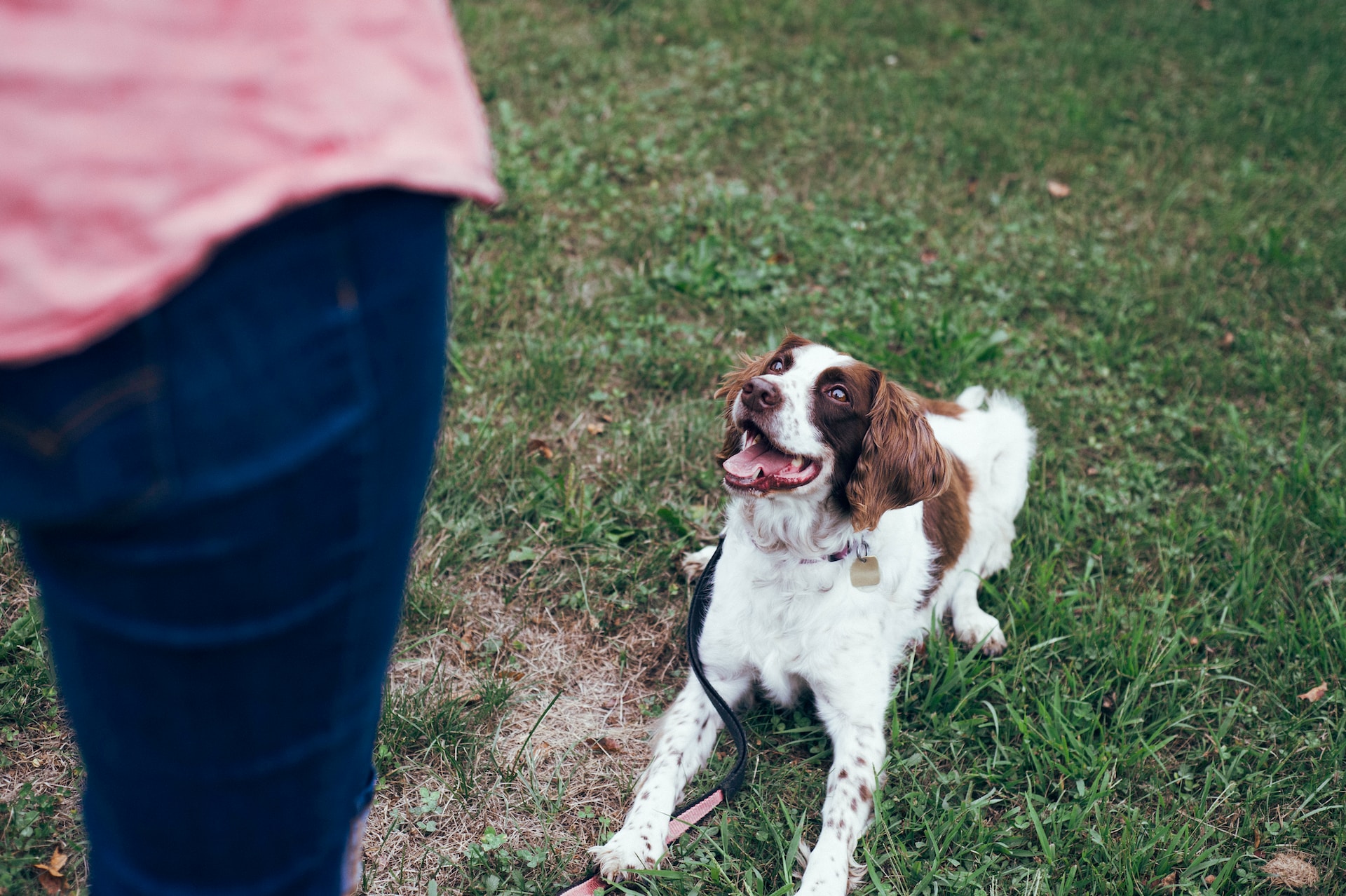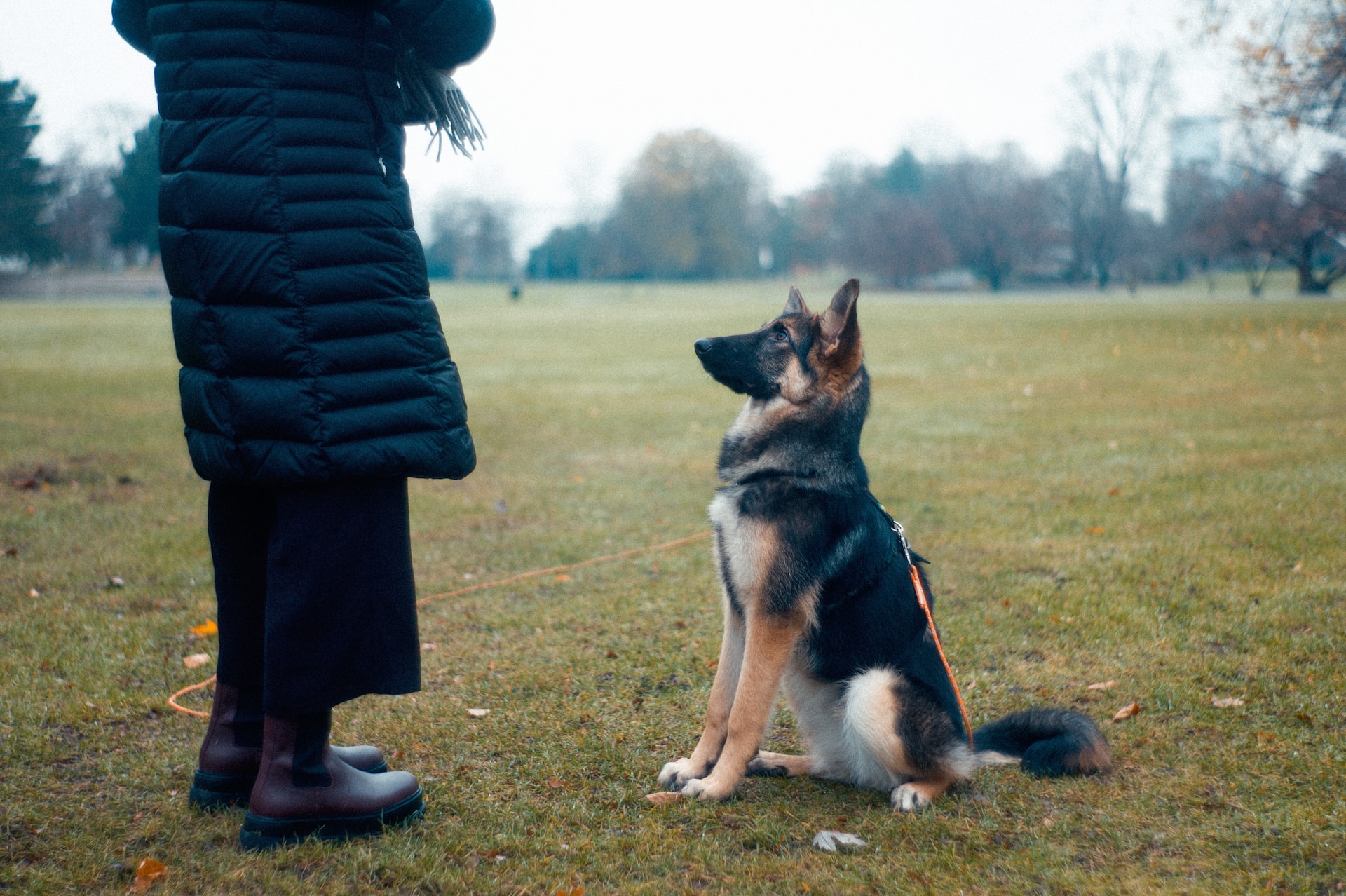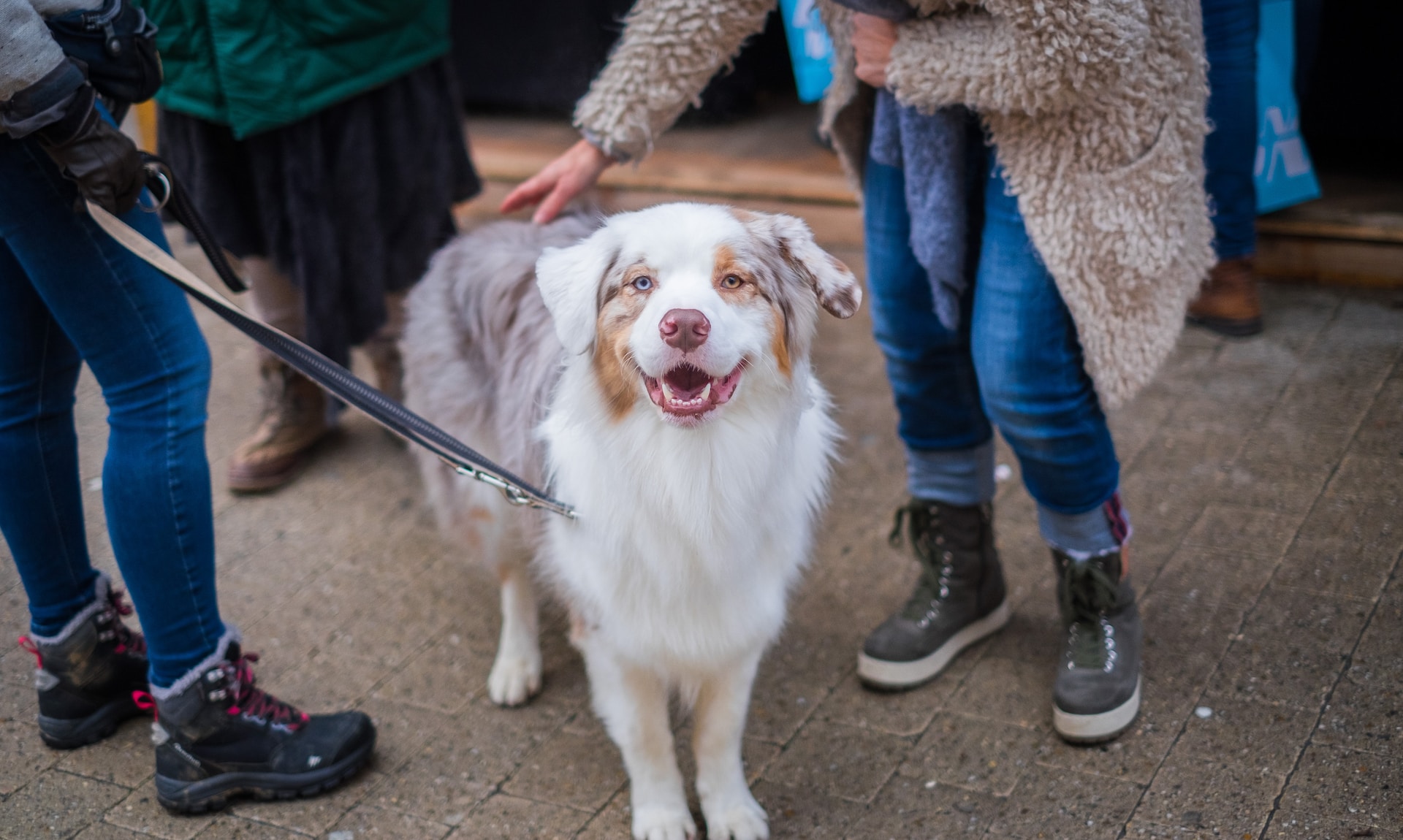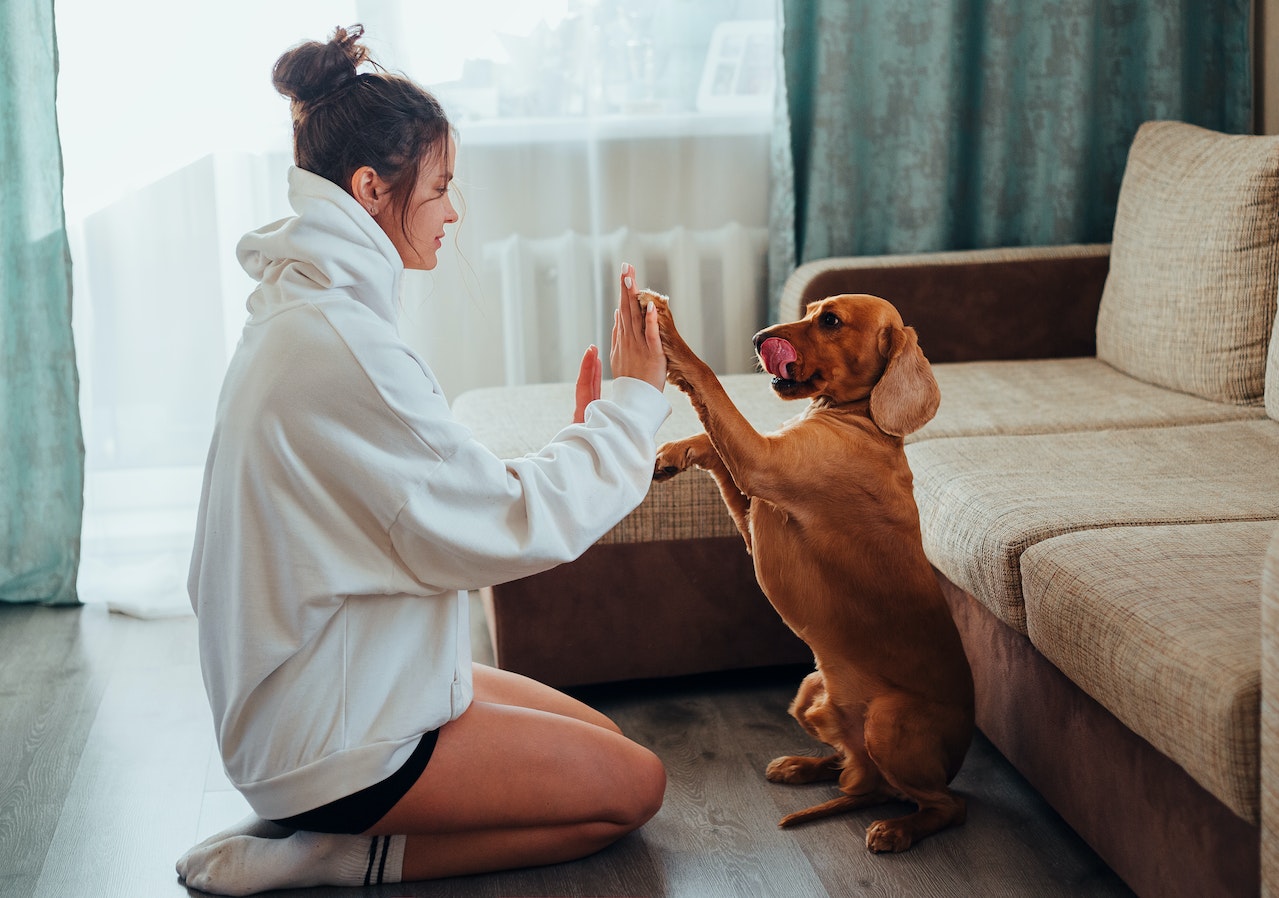
At a Glance: Socialization and basic dog commands are essential for any well-behaved and well-adjusted dog. By learning basic commands, you can keep your dog safe in different environments and situations. Meanwhile, socialization ensures that your pet adjusts well to different animals, people, and places without undue anxiety.
Well-behaved and socialized dogs are a joy to have around. They’re easier to control and can better adjust to different situations. If your pet knows basic dog commands, you can easily take it outside the house without risking its safety because you can always call it back to you or command it to stop in its tracks. Meanwhile, socialized dogs can adapt to different stimuli like other animals, environments, and people.
Teaching your dog commands and dog socialization isn’t as hard as you might think. With patience and persistence, your dog can be one of the most delightful and well-mannered canines in the dog park.
Let’s begin with some basic dog commands.
Basic Dog Commands
Teaching basic commands for dog training helps you control your dog’s behavior while strengthening the bond between you and your furry friend.
“Training your dog is not just about teaching them commands; it’s about building a relationship based on mutual respect and trust.” – Victoria Stilwell
Here are some of the basic commands that you can teach your dog:
Sit
Teaching your dog the sit command is one of the easiest and most important dog training basic commands. This command is the foundation for many other commands and is useful for controlling your dog’s behavior.
To teach your dog the sit command, hold a treat in front of your dog’s nose and slowly move it upwards. Your dog will naturally sit down to reach the treat. As soon as they go into a seated position, say “sit” and give them the treat. Repeat this process several times until your dog learns the command.
Stay
The stay command is another basic command that can help you control your dog’s behavior. To teach your dog the stay command, ask it to sit. When it does, say “stay.” Gradually increase the duration of the stay command and reward your dog with a treat and praise for good behavior.
Come
The come command is a vital command that can keep your dog safe in situations where it might run off. To teach your dog the come command, start by using a long leash and asking your dog to come to you while holding a treat. Reward your dog when they come to you and gradually increase the distance between you and your dog.
Leave It
This command can prevent your dog from eating harmful or dangerous objects. To teach it to your pet, hold a treat in your open hand and say “leave it.” As soon as your dog looks away from the treat, give it treats and praise. However, if your dog tries to get the treat, close your hand and do not open it until your pet calms down.
Drop It
This command is useful when your dog has something in its mouth that it shouldn’t have. Hold a treat in front of your dog’s nose and say, “drop it.” As soon as your dog releases the object, give it a treat and praise it.
Heel
The heel command is useful for keeping your dog close and under control when walking on a leash. To teach your dog the heel command, start by walking with your dog on a loose leash on your left side. Whenever your dog tries to move ahead of you or pull, stop walking and say “heel” while pulling the leash gently toward you. Reward your dog when it starts to walk calmly beside you.
While training your dog to heel, you can also expose it to different types of surfaces to walk on like soil, cement, asphalt, and doggie lawns (see a doggie lawn review here).
Remember that it is important to use positive reinforcement techniques when teaching your dog basic commands. This means rewarding your dog for good behavior with treats, praise, and toys. Be patient and consistent, and you’ll soon have a well-trained and obedient furry friend.
“Teaching your dog basic commands is the foundation of all dog training. Basic commands help you to control your dog’s behavior and strengthen the bond between you and your furry friend.” – Cesar Millan
Dog Socialization
Dog socialization is an essential aspect of owning a dog. It is the process of exposing your dog to different environments, people, and animals to help them become comfortable and well-behaved in various situations. Socialization is vital for your dog’s mental and emotional well-being as well as for the safety of other pets and people.
“Socialization is a critical part of raising a well-behaved, confident, and happy dog. It is essential to start socialization early and use positive reinforcement to reinforce good behavior.” – Karen Pryor
Socialization Should Begin as Early as Possible
The socialization process should begin as early as possible. Puppies are more receptive to new experiences and are less likely to develop fears if they are exposed to different environments and people during their early weeks of life. However, socialization can be done at any age. Older dogs can also benefit from exposure to new experiences.
How To Begin the Socialization Process
To socialize your dog, start by exposing it to different sounds, sights, and smells in your home environment. Introduce it to different people, including children, men, women, and the elderly. Gradually expose them to different environments such as parks, beaches, and busy streets. Introduce them to other dogs in a controlled environment such as a dog park or on a walk with a well-behaved dog.
When introducing your dog to new situations, it is important to monitor its behavior and ensure that it’s comfortable and not scared or anxious. If your dog becomes fearful or anxious, remove it from the situation and try again later, gradually increasing the exposure.
Socialization is a continuous process, and it’s essential to continue exposing your dog to new experiences throughout its life. This will help it develop confidence while preventing phobias.
Conclusion
Teaching your dog good manners is crucial for its well-being and improves your bond. By training your dog to follow basic commands and engaging in socialization activities, you can ensure that it’s well-behaved, confident, and comfortable in different situations.
Remember to use positive reinforcement when training your dog as this will strengthen your relationship and make training more pleasant. Consistency and patience are also essential since it can take time for your dog to learn new commands and behaviors.
Socialization is an ongoing process so it’s essential to continue exposing dogs to new experiences throughout their lives. By doing so, you can help prevent them from developing fears and phobias while ensuring that they’re well-adjusted and happy.
Seek the advice of a professional dog trainer if you’re unsure of how to train your dog or if your dog has behavior issues that you are struggling to correct. With the right training and socialization, your dog can become a well-behaved and beloved member of your family.




